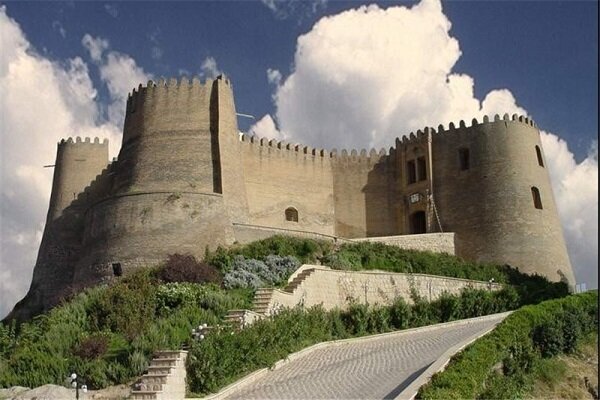Landscaping project on Sassanid fortress reaches its end

TEHRAN – A landscaping project has refurbished the surroundings of the imposing Falak-ol-Aflak Fortress that dominates the skyline of Khorramabad, the capital of Lorestan province in western Iran.
“For this purpose, traditional building materials have been utilized in accordance with the [architectural] elements of the fortress,” the provincial tourism chief said on Tuesday.
“Moreover, the landscaping was carried out according to a traditional pattern… for instance, the flooring was done using bricks and stones,” Seyyed Amin Qasemi said.
Also known as Falak-ol-Aflak Castle, the unmissable eight-towered monument is one of the most visited travel destinations in the region for both domestic and foreign sightseers.
In the past couple of years, the historic castle was faced with lots of problems that were resolved in close cooperation of provincial officials by the means of both essential and urgent repair projects.
The fortress dates from the Sassanid era (224–651). It seems particularly imposing and dramatic when floodlit at night, offering picturesque views of its encircling crenelated battlements.
The Sassanid era (224 CE–651) is of very high importance in Iranian history, under which Persian art and architecture experienced a general renaissance.
“The architecture of the Sassanid monuments in the property further illustrates early examples of construction of domes with squinches on square spaces, such as in the Chahar-Taq buildings, where the four sides of the square room show arched openings: this architectural form turned into the most typical form of Sassanid religious architecture, relating closely to the expansion and stabilization of Zoroastrianism under Sassanid reign and continuing during the Islamic era thanks to its usage in religious and holy buildings such as mosques and tombs,” the UN cultural body says in its website.
The Sassanid archaeological landscape also represents a highly efficient system of land use and strategic utilization of natural topography in the creation of the earliest cultural centers of the Sassanid civilization.
AFM

Leave a Comment